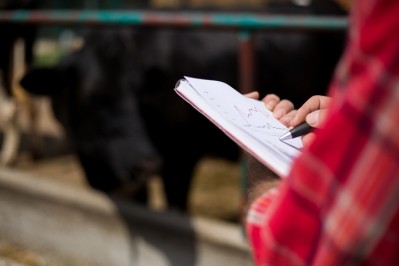USDA antibiotic in-feed data highlights areas for stewardship

The US Department of Agriculture (USDA) released information regarding the use of antibiotics in the feed or production of cattle and swine in the US in a set of reports in May.
The reports outline findings from two national studies looking antimicrobial use and stewardship. They showed that about 70.8% of cattle feedlots used antimicrobials in feed in 2016 and more than 90% of market swine production facilities fed them to pigs, the USDA said.
Karin Hoelzer, senior officer in health programs, Pew Charitable Trusts, weighed in on the data presented, saying they enlighten the whole value chain on the key drivers of antibiotic use and the principal diseases that lead to the use of such drugs.
"The information is really helpful and [the reports are] providing a baseline for how these antibiotics are used, which ones, and for what reasons, and through what administrative routes," she told FeedNavigator.
That kind of data can inform policy around which areas research funds should be focused on in order to find other ways of managing the disease – whether that’s through vaccines or through improved management practices or through other approaches, she added.
“When it comes to antibiotic alternatives, there are so many different concepts that could be researched, and research funding is always scarce, so having a prioritization and identifying where the research dollars could make the biggest impact is really important and this information helps with that,” she said.
Pew Charitable Trusts focuses on providing evidence-based information to address current challenges and has been involved with antibiotic stewardship efforts for several years.
“It ultimately comes down to the fact that antibiotics are really underpinning modern medicine,” Hoelzer said. “All these medical [practices] that we take for granted rely on having effective antibiotics that are able to combat infections when they arise, and we know that the efficacy of antibiotics is really coming under threat.”
“We, at Pew, work on stewardship because we want to make sure that antibiotics keep being effective when we need them,” she added.
Antibiotics in swine, cattle feed
In swine, the survey looked at antimicrobial use in 2016 in 199 facilities that had at least 1,000 market pigs, reported the USDA. More than 90% of facilities fed antimicrobials to market pigs and about 90% of sites with nursery-age pigs also used them, along with 83% of sites with grower/finisher-age pigs.
Respiratory disease and diarrhea were the two most common diseases that prompted the use of in-feed antimicrobials, the department said.
Nursery age pigs were most often fed chlortetracycline/tiamulin and carbadox according to the majority of facilities responding to the survey. However, chlortetracycline/tiamulin, bambermycin, and chlortetracycline were the most common medications fed to grower-finisher pigs.
More than 90% of locations that used an antimicrobial in feed or water noted when use started and what was used, the department said. Additionally, the majority said that they consulted a veterinarian when making such decisions.
For the cattle feedlot report, surveys were conducted with facilities with 50 to 999 cows and those with over 1,000 cows, the USDA said. In total, 378 responded to the survey.
About 87.1% of larger feedlots with over 1,000 cows said they fed antimicrobials, while 69.5% of smaller feedlots reported that they did, the department said.
Common reasons for feeding antimicrobials including respiratory disease, coccidiosis and growth promotion – the most commonly used products included chlortetracycline and ionophores, the department said. However, about 44.4% of feedlots said they did not use any medically important antimicrobials in feed.
For feedlots that fed at least one antimicrobial, 35.4% said they always recorded when use started and 41.2% said they noted what was used. About 38.6% said they never recorded when use started, and about 41.3% said they did not record which product was used.
Plugging gaps
However, the reports illustrated some areas where more work may be needed or where practices could be improved, including the need to establish relationships with veterinarians, improve facility biosecurity and record-keeping along with analysis of antimicrobial use and their effectiveness, said Hoelzer.
“Having actionable records that can be analyzed and that can provide valuable information for the producers and the veterinarian is a real fundamental,” she said. Pew has already started work with livestock production industry stakeholders to address some topics around antibiotic stewardship such as record-keeping.
Additionally, the reports also highlighted information gaps such as duration of use or the number of animals that are given an antibiotic when one is used, she said.
“It is unfortunate that there was no data in the survey to address the question of on how many days are these antibiotics actually used," she added.
However, Hoelzer said, overall, the reports were encouraging.
“It’s great to have the data – it’s helpful to be better understand antibiotic use practices and it’s really encouraging that USDA has committed to repeating this exercise so that we really have more granulated and more frequent data on antibiotic use and stewardship than USDA has been able to collect."














